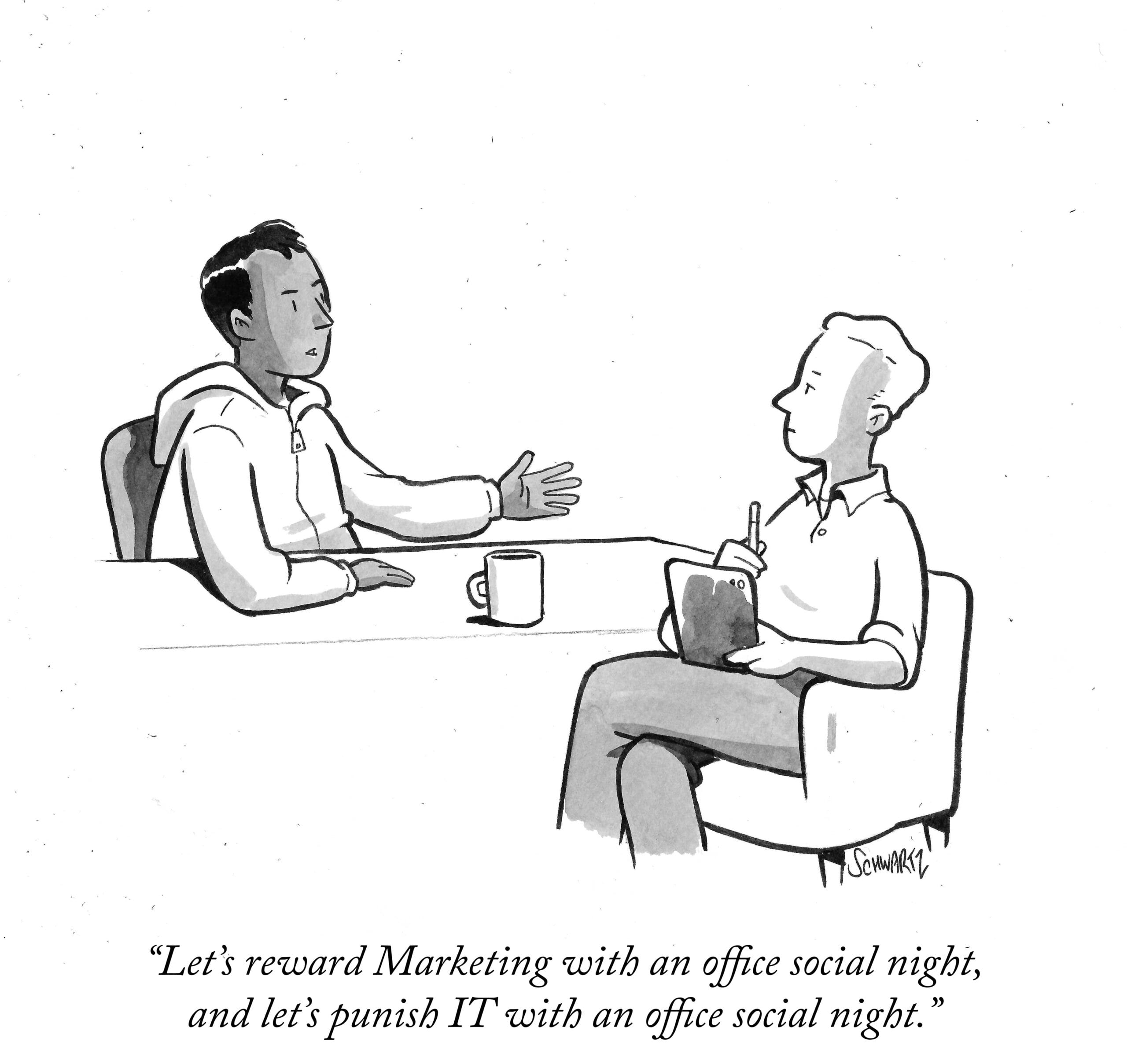Workplace trends
What ever happened to the alleged recession?
In early 2023, many economists predicted a massive economic downturn. Between skyrocketing inflation and a range of forecasters warning that it would take a significant drop in demand coupled with a hike in unemployment to bring it down, some analysts even started to treat a recession as a given. To their surprise, however, the economy actually grew by 3.1% last year, which is faster than the average rate for the five years leading up to the pandemic. As we enter 2024, inflation has fallen substantially, unemployment remains at historic lows, and consumers are still spending – even with Federal Reserve interest rates at a 22-year high. So why did economists get it wrong? While it’s still early to draw conclusions, experts say it’s clear that old models of how growth and inflation relate to one another did not serve as accurate guides this time around.
The push for workers to return to the office is heating up
UPS has joined a number of large companies, including JPMorgan Chase and Boeing, requiring full-time attendance – five days a week in person – for at least some segments of their workforces. This push for in-person work reflects a growing desire among top executives to go back to the pre-pandemic office experience and ways of working together. Even for the organizations still offering hybrid work models, attendance monitoring is becoming more common. For example, EY is using turnstile data to track its UK workers’ office attendance and TikTok is utilizing an app-based tool called MyRTO to track employee whereabouts. With office attendance increasingly tied to employee performance reviews and rewards, those looking to move up in the ranks will need to take these changes seriously.
The AI corner
These days, AI is lifting big tech
It seems AI is the ticket to successful earnings calls this year. Last week, Meta reported that fourth-quarter profits tripled from a year ago, crediting AI for helping make its core advertising business more effective. As a result, on its recent earnings call, CEO Mark Zuckerberg pledged even more aggressive investments in AI going forward. And Meta was not alone in emphasizing its AI efforts – Amazon touted major AI initiatives on its earnings call as well, focusing heavily on its new smart assistant called Rufus, which is intended to help shoppers quickly find what they’re looking for. Additionally, Google reported ongoing strength in Search, YouTube, and Cloud, highlighting that each has already been benefiting from AI investments and innovation. Even Apple, which has been considered a late entrant to the game, teased the rollout of new AI initiatives this year, though the company didn’t go into detail.
AI is fueling a new era of product placement
Product placement, one of the oldest tricks in advertisers’ playbooks, is taking the stage on social media, thanks to AI. According to a recent New York Times piece, the advanced technology makes it easy to insert digital, real-looking product depictions, like soda cans or shampoo bottles, straight onto the tables and walls of videos across YouTube, LinkedIn, and TikTok. From AI-generated brand posters in the background of dance videos to products casually seeming to appear next to influencers while they chat to the camera, these new AI capabilities offer content creators a way to make money from advertisers without physically handling products or screaming “ad” in their videos. Experts say that this new trend offers a glimpse into one way AI could shape advertising in the future – particularly as marketers are placing a greater emphasis on reaching younger audiences that tend to skip or ignore typical ads.
How to address your mistakes as a manager
By monday.com
It’s never easy to admit when we were wrong, but as a manager, the pressure is on even more because there’s an underlying fear that if you make a mistake, your team members will lose respect for you or not trust you as a leader.
In reality, however, being a strong leader doesn’t mean you always get it right – it means that if and when you mess up, you address it the right way and set a healthy standard for others on your team.
And while we learn a lot from our own mistakes, there’s actually so much to be said for learning from our managers’ mistakes. When your employees really see you as human and understand that perfection is not the expectation, it creates a safer environment and a more resilient team that’s willing to take risks and be honest when something goes wrong.
So, how should you address your own mistakes as a manager?
Be honest
No one likes dishonesty, but hypocrisy is even worse – and nothing appears more hypocritical than expecting your team members to admit when they were wrong while brushing aside your own mistakes or pretending that they didn’t happen. So, own up to it when you make a mistake to show your employees that you hold yourself to the same standards as you hold them. This not only earns their trust and respect, it also sets a tone where they can feel more comfortable speaking up when they make a mistake as opposed to keeping it secret and subsequently causing further damage.
Apologize when it affects them
If a mistake you made winds up putting extra pressure on your team members or adding to their workload, be upfront and apologize. For example, if you misjudged a timeline and left your employees cramming to finish a project in time, don’t just move forward – acknowledge it openly. Say something like, “I know I miscalculated and that’s put a lot of pressure on you all, so I’m sorry about that. Thanks for rallying together – I’m here to support you in getting this to the finish line and will do my best to make sure this doesn’t happen again.” These kinds of honest responses are the best way to make your employees feel seen and supported in the face of a frustrating mistake.
Give an explanation
While it’s important to not simply try and justify a mistake you made, as a leader, it’s also good practice to explain how the situation came to be. When you don’t take the time to explain how a mistake occurred, your team members will make assumptions, which are often worse than the reality. So give them the background and context for why a certain decision was made to help them understand your thought processes and considerations. Additionally, this openness conveys to your team that the mistake was not a result of not thinking or not caring. Walking them through how it happened helps your team members learn from where you went wrong and lowers the likelihood of them making a similar mistake in the future.
Be proactive
When you make a mistake, model what it means to be proactive by sharing the active steps you are taking or have already taken to resolve it. If you can fix it on your own, let them know how you are doing so, and when you need some extra assistance, tell them which stakeholders you’re turning to for help. In some cases, you can even loop in your own team members to solve the problem together and demonstrate how group collaboration can yield great solutions. Showing your team that it’s not only acceptable, but actually encouraged to ask for help when things go wrong is the best way to inspire them to do the same when they make a mistake.
Water cooler chatter
Elon Musk, Founder of Neuralink, says his team has implanted its first device into a human brain. The product, Telepathy, is designed to allow a person to control a phone or computer simply by thinking, and as of now is intended for those who have lost the use of their limbs. While the company did not provide further details about who received the implant or whether it was working, Musk says that initial results were encouraging.
Explorers think they’ve found Amelia Earhart’s plane that went missing 87 years ago. Deep Sea Vision, an exploration company, captured a sonar image of an anomaly on the ocean floor that they believe resembles Earhart’s Lockheed 10-E Electra aircraft.
Question of the week
Last week’s answer: 47%
This week’s question: Which companies have the largest wage gaps between CEOs and employees?
Just for laughs

Team social nights: loved by marketing, hated by IT
Don’t miss more quality content!

